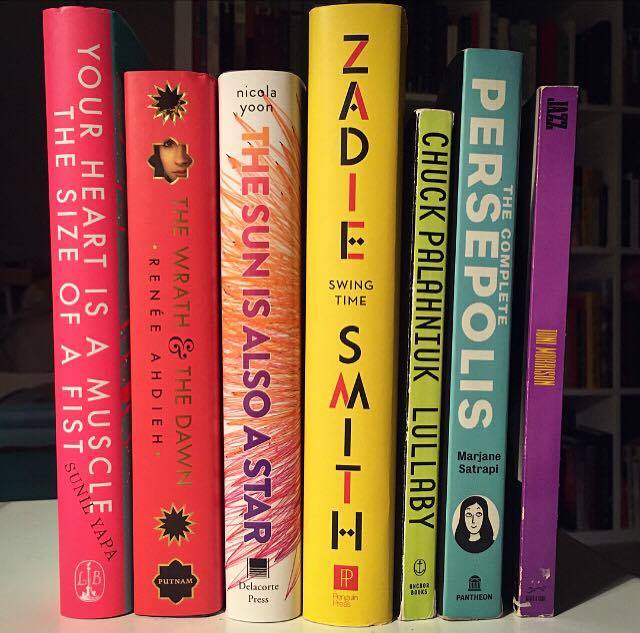In the months following the election, I began reading a lot. I’ve always been a reader, but after a few days of numb shock, I was suddenly going through multiple books a week. I found myself gravitating toward books written by women, people of color, and LGBTQ+ authors, from Zadie Smith to Nina LaCour to Sunil Yapa. It wasn’t a conscious decision; I actually didn’t even notice the shift in my reading habit until April 2017, when I picked up Lullaby by Chuck Palahniuk.
Like I said, my recent move to reading more diversely wasn’t intentional, so neither was breaking out of that pattern with a book by Palahniuk, a white man best known for writing Fight Club, one of the most quintessentially hypermasculine narratives of our modern age.
It took me a long time to get through Lullaby. Okay, I read it in one sitting, but it felt like ages, since I found myself unable to concentrate on the pages in front of me. I don’t remember much of what the book was about, and that might not necessarily be a reflection of the book’s quality.
I was troubled, having abruptly realized that this was the first book by a white man I’d read in awhile—since as far back as the election. As I read, there was an almost palpable sense of white maleness to the text. The feeling wasn’t abnormal; that’s not what was affecting me. It freaked me out because reading it felt like coming home to something uncomfortably familiar.
The vast majority of the books I’ve read in my life have been written by white men, from the picture books I grew up with to most of my favorite childhood series, and then almost everything I read as an English student throughout high school and college. My concern is not that books by white men are all the same, or that they’re all bad—it’s that these books share a similar perspective. I had become so used to the white male viewpoint that I subconsciously recognized it as the standard.
Once I recognized this bias, I began to address my reading habits in a much more purposeful fashion, reading more women, authors of color, and LGBTQ+ voices. I found that it was a much more prevalent issue for me personally than I had thought.
I read The Hate U Give just a few days after Lullaby, and it was a totally different experience for me. The Hate U Give is a YA novel by Angie Thomas, a woman of color, and it follows a young woman as she deals with the death of a friend due to police brutality and the subsequent fallout in her community. Though the plot itself was something we see all too often in the news, it was from a perspective I’d never seen before—characterizations, cultural references, and a mindset so different from my own it was jarring. In the same way that Lullaby was disturbingly familiar, The Hate U Give was disturbingly … not. I now recognize my own failure in not having read enough stories different from my own perspective: I, a reader who believes that books can be doorways into the hearts and minds of others, have ignored such doorways to entire populations of people. Not just the stories of young black women, but also of gay men, trans kids, Chinese American girls, and so, so many others.
Since then, I’ve kept up with this attempt to broaden my perspectives through what I read. I haven’t abandoned the work of white men entirely; this isn’t a boycott. But I’m more aware now than I’ve ever been, and that in and of itself is helping me to choose my books with intention.
This awareness has also followed me to my work with Acquisitions here at Ooligan. I am aware of my own biases and shortcomings of perspective, and approaching manuscripts with that knowledge has been invaluable. It’s important because it’s not only the job of the reader to find diverse voices, but also the publisher and, indeed, everyone in the industry. From acquisitions to design to marketing and publicity, reading—and hiring—diverse voices is the only way forward.
Of the many great books I’ve read this year, I wanted to recommend a few:
- The Hate U Give by Angie Thomas
- Starfish by Akemi Dawn Bowman
- Your Heart is a Muscle the Size of a Fist by Sunil Yapa
- The Sun is Also a Star by Nicola Yoon
- We Are Okay by Nina LaCour
- March 1–3 by John Lewis, Andrew Aydin, and Nate Powell
- Of Fire and Stars by Audrey Coulthurst
- Aristotle and Dante Discover the Secrets of the Universe by Benjamin Alire Sáenz
- They Both Die at the End by Adam Silvera

